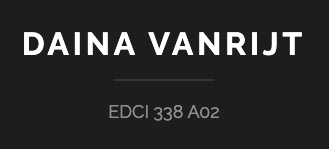Surrounded by digital media and media choices, 21st century students need to understand how to best apply the media resources available for learning, and to use media creation tools to create compelling and effective communication products such as videos, audio podcasts, and Web sites.
Trilling, B., & Fadel, C. (2009). Chapter 4 – Digital Literacy Skills. In 21st century skills: Learning for life in our times. John Wiley & Sons.
What is media literacy?
Media literacy is the ability to view, interpret, create, and present media. Trilling and Fadel share the The Center for Media Literacy view as “a framework to access, analyze, evaluate and create messages in a variety of forms, build an understanding of the role of media in society, as well as [develop] the essential skills of inquiry and self-expression.”
Why is it important?
“We are more interested in what we believe, then what is true.”
Miller, J. (n.d.). EDCI 338 – Media Literacy with Julie Smith [Video]. YouTube. https://www.youtube.com/watch?v=57r3-aEnci0
Democracy is dependent upon an informed voter, that can think, act, and vote accordingly. Information — like beauty it seems — is in the eye of the beholder.
I would like to draw attention to the rise of “Flat-Earthers”. Would this movement exist were it not for modern media and misinformation? It is quite bizarre to witness foundational world views and concepts — that were once held by us all as eternal truths — devolve into questionable realities based mostly on fear, misunderstanding, and magical thinking.
If the information citizens have access to obscures or purposefully misinforms them, then the force behind that information is malevolent and unworthy of our time and energy.
With so much uncertainty in the world of 2021, it is likely much easier for most to disengage from truth-seeking as it can be unsettling.
Ensuring that populations are media literate is the only way we can ensure the survival of democracy.
Why is it dismissed?
Media literacy is essential to healthy and functional modern societies. As Ms. Smith sates in the video, it has to be more than something just added simply to the already exhausting list of teachers’s responsibility in the classroom.
Unfortunately, that scenario is exactly what is happening for the most — at least here in Canada, or BC at least. Media literacy is still way down on the list of priorities. With an aging work force that still values worksheets and duo-tangs, literacy and numeracy take priority with media literacy as an afterthought.
Education must to evolve, to view media literacy as an encompassing skill tree that supports information seeking and presenting in all forms. Instead of the current model, where students are taken to the computer lab once a week to work on powerpoint presentations — one of which being about media literacy.
Varied views, but the Factual Consensus
This reminds me of a quote from George Washington:
“Be courteous to all, but intimate with few, and let those few be well tried before you give them your confidence.”
We must be willing to listen to others, no matter how seemingly incorrect or offensive their views may be. This approach in keeping with my practice as an educator who values the Touchpoints Model of Development (Brazelton & Sparrow).
Once we have truly listened, then we may discern the next course of action.

Leave a Reply